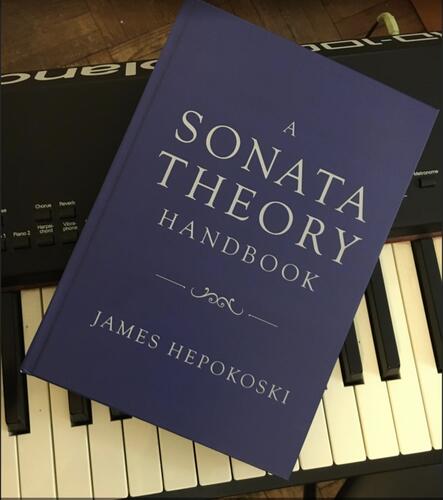
In this new Sonata Theory Handbook, Hepokoski introduces readers step-by-step to the main ideas of this approach. At the heart of the book are close readings of eight individual movements from Mozart’s Piano Sonata in B-flat, K. 333, to such structurally complex pieces as Schubert’s “Death and the Maiden” String Quartet and the finale of Brahms’s Symphony No 1 that show this analytical method in action. These illustrative analyses are supplemented with four updated discussions of the foundational concepts behind the theory, including dialogic form, expositional action zones, trajectories toward generically normative cadences, rotation theory, and the five sonata types. With its detailed examples and deep engagements with recent developments in form theory, schema theory, and cognitive research, this handbook updates and advances Sonata Theory and confirms its status as a key lens for analyzing sonata form.
“This book is so much more than a companion piece to the influential Elements of Sonata Theory it is an invitation to listen to some old favorites from Mozart to Brahms with fresh ears. Each page is brimming with compelling detail and vivid prose. Hepokoski brings sonata form to life.” – Alexander Rehding, Fanny Peabody Professor of Music, Harvard University